Guide
Bael: Health Benefits, Ayurvedic Uses, Side Effects & Nutrition Facts
Bael fruit is a delicious, fragrant fruit native to India and Southeast Asia, which grows mostly on the bael tree (Aegle marmelos). It is generally consumed fresh, dried, or in the form of juice. Bael berries, seeds, and seed extract show remarkable effects on the skin.
Nonetheless, bael fruit products, particularly for specific populations, can be hazardous at higher dosages. Here’s a little history of this rare fruit.
The Other common Names of Bael are Golden Apple, Bengal Quince, Wood Apple, Japanese Bitter Orange, Stone Apple, Aegle marmelos, Arbre de Bael, Bael Tree, Cognassier du Bengale, Indian Bael, Manzana de Piedra, Coing du Bengale, Membrillo de Bengala, Shivaphala, Bel Indien, Bengal Quince, Pomme du Bengale, Bilva.
General Anatomy
Bael has been the only species of the monotypic genus Aegle. this is a tropical fruit that is a small size to medium-sized plant with thin, sagging branches rising to Thirteen meters tall and a very shabby crown
Properties
Fruits obtained from Bael possess antioxidant, anti-inflammatory, and laxative properties. In Ayurveda and Siddha medicines, it is known for their medicinal and therapeutic properties for more than thousands of years.
Table of Contents
How To Cultivate Bael

Where can Bael Grow
The plants grow uncontrolled in dry woods on hills and mountains of central and southern Pakistan and India, Thailand, and Singapore, and nevertheless have Indochina’s mixed deciduous and dry dipterocarp woods.
Bael could be produced in the ph levels of 5–10 in either form of soil like sandy, mud, water covered, unirrigated, oxidative, or alkaline.
Cultivation
The tree has no exacting environmental criteria, requiring a minimum of nitrogen and drainage to do well. The spacing between trees in the orchards is 25 to 30 ft (6-9 m). Seedlings continue to grow within 6 to 7 years, and trees are propagated vegetatively in 5 years.
Within 15 years, maximum production is attained. In India, flowering begins shortly after the new leaves emerge in April and May, and the fruit ripens through bloom in 10 to 11 months – March to June of the next year.
Pests And Diseases
Over a dozen species were observed feeding on Bael. The essential insects which can be conveniently regulated through the use of insecticides are Phyllocnistis citrella, Papilio demoleus, and Aonidiella aurantii Extreme diseases include bacterial shot spot, fruit canker, and gummose. For individuals. Bael genotypes, fruit cracking, is the biochemical condition that happens shortly before fruiting.
Raising And Yielding
It takes around 11 months for fruits to bloom. They are harvested using fruit stalks as a yellowish-green switch color. Based on the cultivar, a fully mature tree yields from 125-1000 fruits.
Parts Of Bael Fruit
- Flower
- The flowers at the end of the twigs and the leaf axils are light green or yellowish, sweetly scented, bisexual, with small drooping unbranched branches. Usually, they do appear with the leaf surface. The calyx has tiny teeth and is smooth. The 6–8 mm petals of four or five converge into the flower. Most stamens have small filaments, with anthers of light brown, small type. The ovary is bright white with an unnoticeable ring.
- Leaf
- The leaves are trifoliate, ovate, and pointed or tapering tip and round base, untoothed or with deeply flattened teeth. Leaves usually are light green or pinkish, slightly hairy, while leaves are smooth and dark green. Every leaf has four to twelve pairs of side veins linked at the edge.
- Fruit
- The bael fruit is usually five to twelve in diameter. It is ovoid or mildly pear-shaped with such a thick, tough rind and therefore does not break at maturity. The piney shell is sleek and black, white until it turns yellow until it is fully mature. Within are segments packed with enticing orange pollen, each layer with squished-oblong seeds each with about one cm long, carrying soft strokes and each contained in a sack of sticky, transparent mucilage which solidifies on curing. The precise number of seeds ranges from one source to another.
- Ripening on the tree takes about eleven months, and can reach the size of an average grapefruit or pomelo, but some are bigger. Its shell is tough; it needs a hammer or large knife to crack. Its yellow spongy pulp is very flavourful. It has been identified as a marmalade tasting and rose to smell. Boning suggests that the taste is “soft, spicy, and friendly, although spicy and somewhat astringent in some varieties. It describes a marmalade produced, in part, of citrus but, in part, from tamarin.
- Bark
- Its bark is light brown or grey, smooth or slightly cracking and flaking, lined with delicate straight spines, One and a half up to two and a half, and sometimes with slithering sap dripping out of cut pieces. Also, its gum is defined as a smooth, gummy sap that resembles gum arabic, which exudes through wounded branches, which hangs in large chunks, slowly becoming firm. At first, it is pleasant and then painful to the throat.
Where to look and Find a Bael Fruit
Aegle marmelos are native to the Indonesian and Southeast Asian subcontinents and are grown in Sri Lanka, Thailand, and Malaysia. It exists at elevations from 0–1,200 meters (0–3,937 ft) in high, open forest on hills and plains, with average annual rainfall about 570–2,000 mm (22–79 in).
In India, it does have a reputation for growing in areas other plants can’t. It managed to cope with such a wide variety of soil conditions, is waterlogging resistant, and has an extraordinarily high-temperature resistance of −7–48 ° C (19–118 ° F).
Health Benefits Of Bael

Controls Diabetes
Bael tree bark and branches have an active constituent called Feronia gum which plays an important role in controlling diabetes. It maintains the production of insulin from the beta cells into the bloodstream, which further maintains the blood sugar level. Bael fruit is proven to be useful for diabetes management. Some doubt it, but you’ll get a better view if you talk to health professionals.
Just get a glass of bael fruit throughout the morning, and even the laxatives inside it hopefully maintain the levels of blood glucose in order. Here some of the other herbs also help to control diabetes.
Evade Constipation
Suppose constipation is a big issue for you after all this fruit would be suitable for other gastrointestinal problems. The laxative compounds in it tend to prevent constipation when washing the intestines.
Use it as a drink with specific salt and black pepper to improve its advantages if it does daily for two to three months.
Precludes Diarrhea, Caused By Bacteria
Compounds derived from bael fruit have potent effects in the fight against harmful bacteria. The Shigella dysenteriae bacteria attach to colon cells, causing nausea, fever, and pain in the stomach.
Young kids, travelers, and those with compromised immune systems are particularly susceptible to infection with shigella. Studies indicate that shigella is less able to bind to colon cells and the production of lectins derived from bael fruit, thereby ensuring protection against disease.
Counter Skin Infections
The extracts from bael fruit, roots, and leaves have both antifungal and antiviral properties along with antimicrobial properties. Bael leaf oil hinders common fungal types that infect the skin.
The same happens to other bacterial species, including those blamed for staph infections. It suggests as a possible first-line therapy that bael fruit has useful compounds to combat skin infections.
Also Read: Best Herbs For Skin
Can Decrease Cancer Risk
Bael fruit extract acts as an antioxidant only with scavenges for free radicals, particularly nitric oxide including,1.diphenyl and 2.picrylhydrazyl. Six different types of cancer are caused by free radical damage to cells.
While bael fruit is not a confirmed cancer cure, some chronic sufferings that raise the risk of cancer can be mitigated over time.
Our best herbs to treat cancer article will help you to know some other herbs that effectively treat cancer in Ayurveda.
Protects Intestine From Ulcer
The extract obtained from bael fruit seeds decreases the amount and acidity of gastric juices in animal experiments. All methanolic and aqueous compounds from bael seeds tend to facilitate ulcer healing.
Besides, extracts from the bael fruit leaves provide antioxidant defense against radiation damage to the GI tract. This will help boost the health and quality of life of someone who is receiving cancer radiation therapy.
Also Read: Best Herbs For Ulcer
Bael Is Used To Treat Epilepsy
Across the world, more than 70 million people have epilepsy. Low supply of anti-epileptic medications, adverse effects, and drug-resistant epilepsy impacts people’s quality of life with epilepsy in underdeveloped healthcare nations.
For this neurological disorder, herbal therapy is commonly used. The chemical properties that bael has are used to assist with the treatment of epilepsy. Current studies are being done to ensure this will have an excellent benefit for people who have this. illness or condition
Used To Prevent Fever
People who have a fever lose their sense of taste. So other people tend to lean to medicines. These medicines sometimes have adverse side effects and can damage you as well in the long run.
As per the properties, bael fruit has. This is used as a treatment for those undergoing problems with their health. What they do is they get the leaf and blend it with honey to make a sweet and delicious drink.
Asthma
It is a disease that narrows and swells the airways, which may create excess mucus. This can make respiration difficult and induce coughing, whistling (wheezing) while breathing out and shortness of breath.
Work suggests that having a drug that includes bael fruit and Boswellia gum improves breathing for people with asthma. It’s unknown if the symptoms are due to bael, or the blend.
Also Read: Best Herbs For Asthma
Cures Hemorrhoids
Bael is a relatively obscure treatment that can be beneficial in alleviating signs of hemorrhoids. Bael (also known as Aegle marmelos, wood apple, or bilva) is simply a member of the genus of citrus.
Bael is yellow, shaped like a plum, and inside has a pulpy fruit with lots of black seeds, like an apple. The medicinal properties of the fruits and leaves are known.
Digestion
Bael is an excellent fruit for curing various digestive issues with its anti-bacterial and antifungal properties. The tannin content in Bael leaves decreases inflammation and is highly advisable for treating stomach ulcers. The laxative properties will clean the intestines.
Scurvy and Earaches
Vitamin C deficiency leads to scurvy in which arms and legs get weakened. Bael has lots of vitamin C; thus, it is beneficial for people with scurvy. The antibacterial properties of Bael help in treating ear infections, and it also removes wax from the ear.
Blood Purification
Bael plays an important role in removing impurities from the body. With a large amount of potassium, it purifies the blood, eliminates toxin substances, and enhances the overall immunity of the human body. Apart from that, it is also useful in treating heart, liver, and kidney issues due to AMA accumulation.
Heart and Cholesterol
Bael fruit is a natural antioxidant and a cardio-protective fruit that has a main role in treating heart ailments. It strengthens the heart muscles, lowers blood cholesterol levels, and prevents lipid accumulation. As a result, it reduces the risk of atherosclerosis, heart blocks, heart attacks, and blood clots.
Already, we have seen that Bael has detoxification by eliminating AMA toxins from the human body. This property controls triglycerides, serum, and tissue lipid profiles which reduces the accumulation of LDL cholesterol (bad cholesterol) within the body. This, in turn, enhances the body metabolism and aids the body in losing weight.
Hair
From ancient days, Bael is used in promoting hair growth. The antimicrobial property of the tree cures scalp and hair infections like folliculitis (inflammation of hair follicles), itching, and dandruff. The major nutrients present in Bael nourishes the hair follicles, improves blood circulation, and also strengthens your hair from its roots. By balancing the stress hormone secretion, it prevents hair fall and breakage.
Lactation
Bael increases the production of prolactin and corticoids, which induces galactagogue action. This aids in increasing lactation and breast milk quality. This is beneficial for babies since breast milk is essential for their nourishment and strengthening of the immune system.
Prepare bael juice with dry ginger powder and jaggery to increase galactagogue action.
Mouth Ulcers
The glycoproteins present in Bael treats different kinds of stomach ulcers, such as peptic and ulcerative colitis. With its soothing properties, the bael pulp when applied on ulcers in the oral cavity, aids in increasing the healing process.
Ayurvedic Uses Of Bael
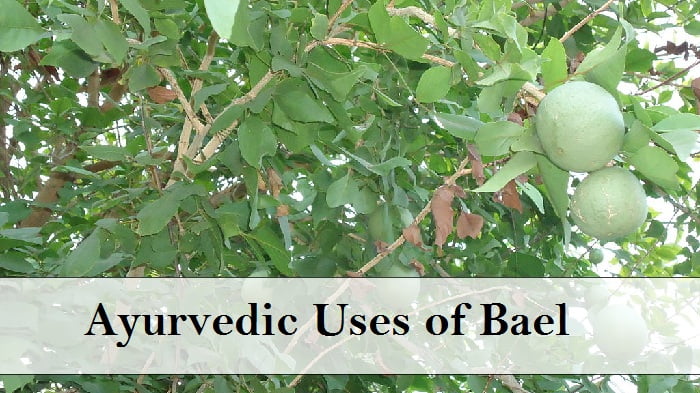
Many scholars know Ayurveda as the oldest method of healing. In Sanskrit, Ayurveda means “The Philosophy of Life.” Ayurvedic wisdom developed in India over five thousand years ago and is also referred to as the “Mother of All Healing.”
It originated from ancient Vedic civilization and was transmitted by experienced teachers to their followers in an oral tradition for several thousands of years.
A few thousand years ago, some of this information was scheduled to be written; however, most of it remains unavailable. The concepts underlying all of the now popular Western natural treatment methods have their origins in Ayurveda including homeopathy with polarity therapy.
Thanks to its wide variety of advantages, Bael or Bilva has considerable importance in Ayurveda. Bael is also listed in ancient Ayurvedic texts as being one of the “Dashamoolas, “roots possessing anti-inflammatory and stress-relieving properties. There is medicinal value to any and every aspect of the forest.
The fruit is very good for increasing digestion and avoiding constipation when eaten unripe.
The ripened fruit has Madhura ras; however, all three cuttings are irritated. This does, however, play a vital function in treating and preventing diarrhea, including cholera. The ayurvedic properties of bael fruits are
| Taste (Rasa) | : Pungent (Katu), Bitter (Tikta) and Astringent (Kashaya) |
|---|---|
| Properties (Guna) | : Heavy (Guru), Sharp (Tikshno), and Oily (Snigdha) |
| Potency (Ushna) | : Hot (Virya) |
| Metabolic property (Vipaka) | : Pungent (Katu) |
| Effects on Trisosha | : Aggravates the Pitta doshas; Pacifies Vata and Kapha doshas |
The plant’s roots ward off diarrhea and nausea. Churna from plant leaves evens the three doshas but is effective against pelvic colic discomfort, dyspepsia as well as gastritis.
The decoction of the plant’s stem or bark plays a crucial role in treating heart-related illnesses, boosting immunity, and curing rheumatoid arthritis.
The beneficial forms of bael fruit
- Bael Churna ( Bael powder)
This powerful Churna has anti-bacterial, carminative, and anti-inflammatory properties, which is important for the treatment of diarrhea, dysentery and maintains a healthy digestive system. This powder contains bael, fennel, asafetida, coriander, and ginger.
- Bilva(Bael) Oil
Bael oil is prepared from the roots of this plant which is useful in curing ear diseases.
- Bael Capsule (Bael Gutika)
In Ayurvedic medicine, Bael fruit is also available in the form of tablets or capsules to treat insect bites and fever.
Bael Dosage
The dosage of Bael may vary from person to person based on their age, body strength, appetite, and condition of the person. It is recommended to consult an Ayurvedic medicinal practitioner before taking it.
Bael Powder: ¼ to ½ teaspoon twice a day.
Bael Decoction: ½ to 1 cup twice a day.
Bael Capsule or Tablet: 1 to 2 capsules twice a day.
Bael Candy: 4 To 5 candies.
Other Uses Of Bael

Bael Uses
- Its juice is used for making drinks and squashes, particularly during the summer season due to its sweet and friendly nature.
- Tender Bael leaves are used as salads.
- This filters the water because it works by removing the toxic gases from it to purify the environment.
- It’s intended to heighten hunger.
- The extracted oil helps to treat breathing issues.
- It’s used to produce chocolate, peas, toffee, pulp powder as well as other eatable goods.
Bael Has Therapeutic Advantages
Because of the presence of many biochemical substances such as alkaloids, flavonoids, polysaccharides, and lavender oil, Bel is due to its medicinal values.
Bael’s fleshy inner substance is curative, pesticidal, nutritional, and medicinal and is used to cure many diseases and disorders.
Wood apple leaves are of medicinal interest and are used in blood cholesterol-lowering.
This is naturally anti-inflammatory. When added to the infected region, their extracts help to relieve the inflammation.
The origins of Bael are antidiarrhoeal, snake venom reliever, and soothing anti-inflammatory.
Other Health Benefits Of Bael
Also, Bael plays a crucial role in reducing bad cholesterol. This is effective in treating disorders in the heart, kidney, and liver. It purifies the blood because of the high potassium level, eliminates contaminants, and improves the body’s overall protection
Precaution
Bael is, however, a beneficial Ayurvedic plant, but it still has specific side effects. One should take care of the conditions provided below before eating the fruit.
Abdominal conditions: The heavy intake of bael results in intestinal conditions.
Constipation: It will lead to illness if you eat some of the berries.
Birth: At birth, one should not take Bel.
Medicine: It does not continue to be seen in medicine.
Diabetes: By adding sugar in the blood to reduce, caution should be taken to note the level of sugar, because it could be too low.
Hypertension: When you have elevated blood pressure, one should stop taking this seed.
Bael Religious Importance
Bael has considerable spiritual connotations. In Hindu tradition, the leaves and seeds of this tree were offered to Gods throughout the prayer, particularly to Lord Shiva. Their leaves can also be used for adoring Parvati as well as Viva Rupra. The plant has been used in spiritual rituals and ceremonies and has been listed in Vedas and Mahabharata. It is believed as the favorite tree of Lord Shiva and as the residence of Goddess Lakshmi, a God for wealth and prosperity.
Dietary Information Of Bael Fruit

Bael is a rare fruit, and there is currently no USDA quality details available for both the fruit. The description is supported by even the most current data given by Purdue university’s school of Horticulture for 100 gm of bael fruit.
Minerals And Vitamins
Bael fruits are a power source of many nutrients such as beta-carotene, protein, riboflavin, vitamin B1 and B2, and vitamin C. It also has thiamine, riboflavin, niacin and carotene. Further, it also has considerable amounts of minerals, namely calcium, fiber, potassium, and good fats. Also it contains some magnesium, zinc, copper, and iron.
Fat
The bael fruit contains minimal fat, at less than 1/2 gram per 100 grams.
Grab Bits
Bael fruit is made mainly of carbohydrates, with the dietary component of fruit being around 30 grams per 100 grams. The weight of bael fruit, other than glucose, comes primarily on water (55 percent – 62 percent)
Protein Consumption
The fruit Bael has low protein content. There are between 1.8 and 2.6 grams of protein out of 100 grams of fruit.
Benefits of components present in Bael
- Bael is loaded with lots of nutrients like Vitamins A, B1, B2, and C; minerals such as calcium, potassium, and iron. These compounds in Bael are useful in treating tuberculosis, hepatitis, ulcer, and digestive issues. It is also rich in tannins which treat cholera.
- Bael has a good amount of carbohydrates that provide energy to the body for doing various body activities. It also aids the brain cells to perform better, helps in digestion, and maintains the cholesterol level.
- The potassium present in Bael fruit aids people with hypertension. It blocks the arteries from hardening, thus decreasing the risk of strokes and heart ailments. It also removes or extracts sodium content through urine, helps in lowering the blood pressure, and treating various issues of hypertension.
- Calcium is an essential component for bone health, and it is the second abundant element found in Bael. Consuming this will result in strengthening of teeth, bones and also prevents osteoporosis.
- Bael is a rich source of iron, and thus it acts as a natural blood purifier. Iron content increases red blood cell (RBC) and hemoglobin count in the blood. It is a beneficial fruit for people with anemia.
- Bael has Vitamins A, B, and C, which makes the Bael fruit the best choice for treating eye problems, digestive issues, heart problems, skin diseases and enhances the overall immunity power.
Bael fruit Nutritional value per 100 g (3.5 oz)
- Energy: 137 kcal
- Carbohydrate: 31.8 gm
- Fat: 0.3 g
- Proteins: 1.8 gm
- Vitamin A: 55 mcg
- Vitamin C: 60 mg
- Thiamine: 0.13 mg
- Riboflavin: 1.19 mg
- Niacin: 1.1 mg
- Carotene: 55 mcg
- Calcium: 85 mg
- Potassium: 600 mg
- Fiber: 2.9 gm
- Water: 61.5 g
Risks And Side Effects Of Bael

While bael is a plant, so there are no significant side effects, the possibility of consuming massive amounts of fruit or fruit powder may vary. Getting too much of the drug could contribute to digestive problems. Some cases of constipation were reported while people were taking big doses of bael.
Bael can lower blood sugar and interact with medications and hormones that affect the thyroid. Pregnant girls and mothers who breastfeed do not take bael. Bael leaves have historically been considered to cause miscarriage and to sterilize women.
Bael can interfere with drugs for diabetes and can cause diabetic patients issues. When you have diabetes, see a doctor before taking bael.
Allergies With Bael Fruit
Bael fruit is not a famous allergen, but allergies to any food may be created. Look out for symptoms such as vomiting, shortness of breath, hives, tongue swelling, or dizziness, eight mainly if they occur shortly after eating bael fruit when you fear an intolerance to bael fruit visit an allergist for a thorough examination.
Species
Many kinds of bael fruit exist. Smaller, hard-shelled varieties cultivated in Florida are used not for traditional fruit use but for medicinal purposes. More extensive and softer fruits with thinner rinds decreased sugar content, and fewer seeds are more suitable for commercial production.
When will it be ready?
Bael fruit is common in India and Southeast Asia, and it has been harvested from March through April. It’s present in Florida even during the year. It chooses Bael fruit while it is only yellowish-green. Let everything sit till the stem differentiates from either the fruit as well as the green tint vanishes.10 Avoid bloodied fruit or signage of mold.
Keeping and the health of food
When handling new bael fruits, follow regular food health standards. Wash your hands with water and soap and clean the fruit under hot water until it is sliced into. Hold the fruit of bael apart from the raw beef, poultry, or fish.
When purchasing bael fruit juices, make sure that the drug is pasteurized. Most beverages sold in the U.S. are pasteurized and will have a warning mark if not. However, it is not possible to label freshly squeezed juices sold by the glass at juice bars and farmers’ markets.
Recipes using Bael Fruit
1. Bael Sherbet

Ingredients
- Medium-sized Bael fruit – 3 to 4
- Chilled milk – 4 cups
- Water – 1 Cup
- Jaggery powder – as required
- Cardamom powder – 2 tbsp
- Black salt – 1 tbsp
Process
- Clean the Bael fruit and open it. After that, remove the pulp from it.
- Mix the pulp and water in a bowl till it becomes soft and turns into semi-fluid.
- Filter the mixture to remove solid particles.
- Then add other ingredients such as chilled milk, cardamom powder, jaggery, and black salt to bael juice.
- Diabetes patients can add chilled water as an alternative to milk, then black salt, and cumin seed powder as a healthy alternative to this sweet.
- Then serve the sherbet in a glass.
Health Benefits of Bael Sherbet
- Bael fruit in this sherbet has antioxidants which can treat gastric ulcers, help indigestion, and also treat diabetes. It also possesses laxative properties that treat constipation, and the anti-fungal ability cures infections.
- Milk is an enriched source of calcium that aids in strengthening your bones and enhancing your immunity and body metabolism. Using cold milk relieves acidity, soothes the stomach, and also helps in weight loss.
- Jaggery is a source of iron that cleanses the body, decreases menstrual pain, prevents anemia, improves immunity, detoxifies the liver, and treats constipation.
- The aromatic Cardamom reduces high blood pressure, treats infections and bad breath.
2. Bael Smoothie

Ingredients
- Ripen Bael fruit pulp – 200 gms
- Ripe bananas – 2 (mashed)
- Yogurt – 4 tbsp
- Mango pulp – 3 to 4 tbsp
- Sugar – 4 to 5 tbsp
- Chilled water – 2 cups
- Coconut – 1 cup
- Mango ginger powder – 2 to 3 tbsp
- Cardamom powder – 1tbsp
- Black pepper – 1 tbsp
- Black salt – 1 tbsp
Process
- Mix water and Bael pulp until it becomes soft.
- Then mix all the ingredients such as banana, cardamom powder, yogurt, mango pulp, mango ginger powder, sugar, pepper, and black salt in a separate bowl until it gets a smooth texture.
- Then, add the Bael mixture to it and mix it.
- Filter the mixture to remove any solid particles.
- Then serve it in a glass by cooling and garnishing it with grated coconut.
Health benefits of Bael Smoothie
The nutritious and healthy mix of fruits such as Bael, mango, and banana with pepper, rock salt and yogurt sprinkled on the top makes this mix useful to tolerate excessive summer heat in your body. It cures stomach issues with its soothing effects, aids in digestion, and also satisfies hunger by giving a feeling of fullness.
3. Bael Pickle

Ingredients
- Ripe bael fruit pulp – 3
- Mustard seeds – ½ tsp
- Chana dal – 2 tbsp
- Urad dal – 1 ½ tbsp
- Dry red chilli – 9 to 10
- Curry leaves – 8 to 9
- Water – ½ cup
- Asafoetida – ½ tsp
- Jaggery – 1 tbsp
- Oil – 1 tbsp
- Salt – required
Process
- Mash the bael fruit pulp with a little water to make it soft.
- Pour a small quantity of oil into a heated pan and add mustard seeds.
- After the seeds get fried, add chana dal and urad dal and saute the ingredients until they turn brown.
- Then add red chilies, asafoetida, salt, jaggery and mix them for a few minutes.
- With low flame, add the bael pulp and curry leaves to the spices and dal.
- Cook them for a few minutes to mix up with all the spices.
- Then cool it down and blend the entire mixture in a blender by adding a little amount of water.
- Add salt, sugar, and sufficient water as per your need.
- Finally, serve it. You can use this by keeping it in a fridge for a few days.
Health benefits of Bael Smoothie
Bael pickle helps in the digestion process, and curry leaves added to the pickle eliminates bacteria and thus prevents diarrhea, dysentery, and constipation.
Conclusion
This review aims to review the scientific knowledge of various qualities of bael fruit and use it for a variety of purposes in the traditional medicine method. The use of bael fruit juice is of considerable medical, medicinal, and economic value in daily life.
Bael seed provides nutrients such as vitamins (riboflavin), minerals, trace elements, strength, and phytochemicals, including flavonoids, polyphenols, and enzymes that have been shown to have various health benefits.
From this study, it is very clear that bael is an essential medicinal herb commonly used in Ayurveda and other medicinal systems. Bael fruit juice is an outstanding source of drinking water and natural sugar, which is essential primarily for containing vitamins , minerals, phytochemicals, antioxidants, pigments, strength, organic acids, dietary fiber and other food components, which are essential factors in this plant ‘is medicinal benefit. In fact, modes of resistance of a few bioactive compounds have so far been established.
The unripe or half-repeated fruit juice is perfect for digestion, helpful for scurvy prevention or healing, and it improves the function of the stomach. This helps repair ulcerated intestinal surfaces and has important action against pathogenic intestinal species.
The present analysis presents research knowledge on the various characteristics of bael fruit juice used for a variety of uses in the traditional medicine system.
The therapeutic uses of bael fruit are very large as the harvests are only beginning to mature. As a result, as an alternative treatment, it has strong potential for treating diseases such as diabetes, elevated cholesterol, peptic ulcer, vomiting, diarrhea and typhoid, constipation, a viral disease.
The bael fruit juice also has anticancer effects, cardio-protective, antibacterial, antifungal, radio-protective, antipyretic, analgesic, antibiotic, antiviral, anthelmintic and anti-inflammatory, hepatoprotective, tissue repair. The ripe juice of the fruit is spicy, has properties of cooling and laxative, and prevents leakage or bleeding.


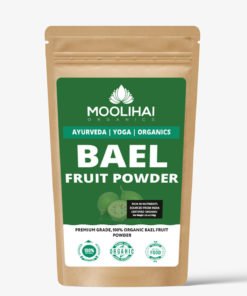

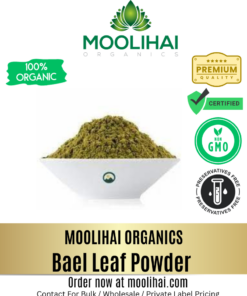

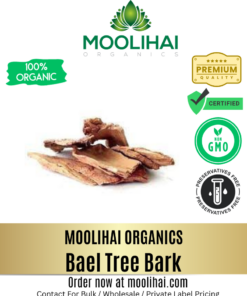

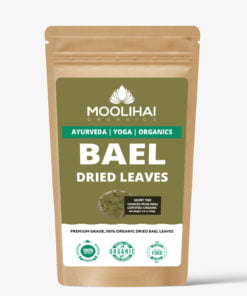

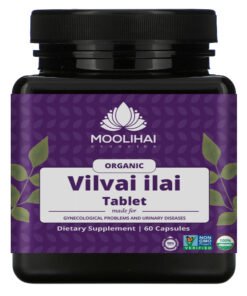
Ponnatharam Stone (Raw) | For Permanent Hair Removal
Vengai Paal | Black Bindi | Dhrishti Pottu | Vengai Pottu for Babies | 100% Natural
Dried Avaram Senna Flower / Cassia Senna Auriculata / Aavaram Poo / Tarwar / Amaltas Leaves / Senna Auriculata / Avaram Poo / Sanay / Alexandrina / Tanner’s Cassia flower
Natural Dried Moringa Flower – Moringa Oleifera – Drumstick Tree Flower – Murungai Poo – Munagaku Flower
Akasa Garudan Kilangu / Redfruit Creeper / Corallocarpus Epigaeus
Original Edible Camphor | Pacha Karpooram | Bhimseni Camphor
Saussurea Obvallata Seeds / Brahmakamal Seeds / Queen of the night / Sacred Saussurea Kon Kapfu / Brahma Kamalam / Nishagandha
Insulin Leaf Powder / Chamaecostus Cuspidatus / Costus Pictus / Spiral Ginger / Insulin Powder / Costus Igneus
Achu Pottu for Babies | Bindi Mould Set | Baby Seratta – 1 Set
Kaunch Beej Powder |Poonaikali | Velvet Bean Powder | Mucuna Pruriens | Kapikacchu | Natural Nervine Tonic & Muscle Builder
Aalam Pazham / Banyan Fruit Powder / Ficus Benghalensis / Marri Palu / Bargad / Dodda Alada Mara / Peraal / Vat Vriksha Powder
Traditional Vasambu Valayal for Babies | Calamus Bracelet | 100 % Pure & Natural